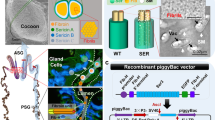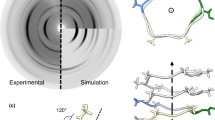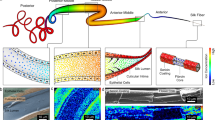Abstract
SILK, as it occurs in the silk-glands of the silkworm (Bombyx mori), consists of two distinct protein systems, and, during the spinning by the worm of the double filament which serves as a building material for the cocoon, these two systems are forced through small orifices in a manner such that they respectively produce a central core or medulla of fibrous material and an outer layer or cortex of gum-like substance. The cortical protein material (sericin) is readily dispersed by hot solutions of soap or mild alkali, while the protein material (fibroin) forming the core of the filament is insoluble in water and is resistant to relatively strong chemical reagents; it is these properties of the extruded filament that partly account for its use as a textile fibre.
This is a preview of subscription content, access via your institution
Access options
Subscribe to this journal
Receive 51 print issues and online access
$199.00 per year
only $3.90 per issue
Buy this article
- Purchase on SpringerLink
- Instant access to full article PDF
Prices may be subject to local taxes which are calculated during checkout
Similar content being viewed by others
References
Z. Chem. Ind. Kolloide, 10, 7–12 (1912).
Bull. Inter. Inst. Agric., 10, 454 (1909).
Giorn. Chim. Ind. Appl., 15, 506–510 (1933).
Ind. Eng. Chem., 22, 965–967 (1930).
Biochem. Z., 29, 294 (1919).
Biochem. Z., 170, 126 (1926).
Koll. Z., 48, 217 (1929).
J. Gen. Physiol., 13, 121, 133, 477 (1929–30).
Author information
Authors and Affiliations
Rights and permissions
About this article
Cite this article
CADWALLADER, C., HOWITT, F. & SMITH, S. Reversibility of the Denaturation of Silk Fibroin. Nature 146, 301 (1940). https://doi.org/10.1038/146301a0
Issue date:
DOI: https://doi.org/10.1038/146301a0
This article is cited by
-
Denaturation and Renaturation of Proteins
Nature (1945)



